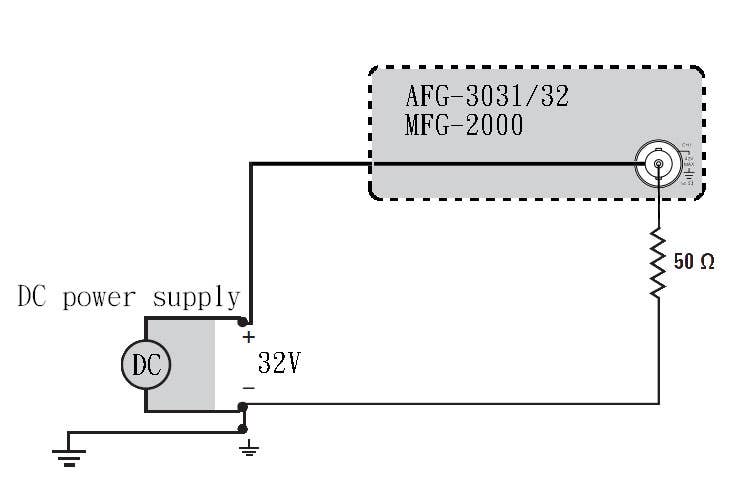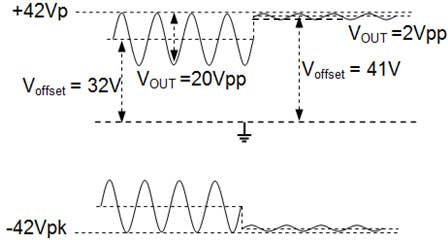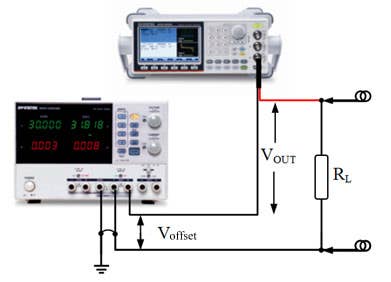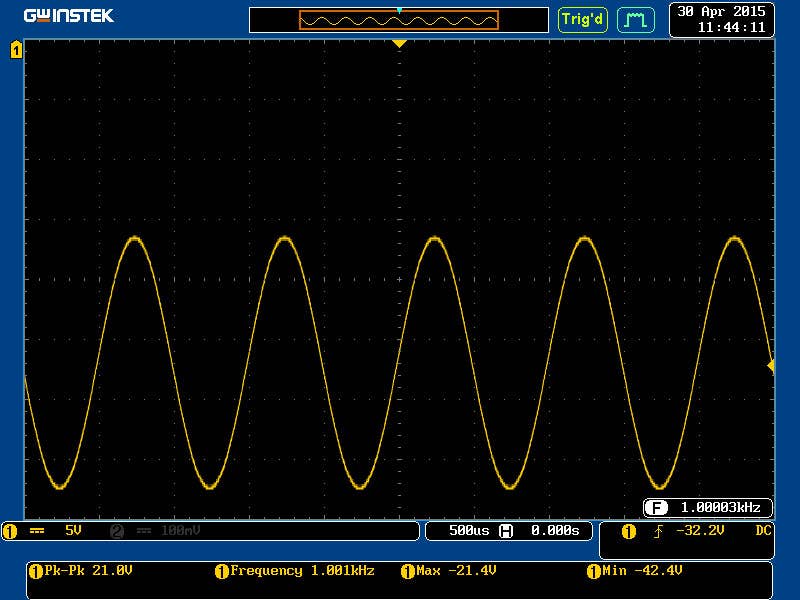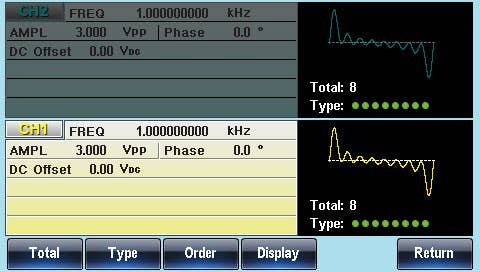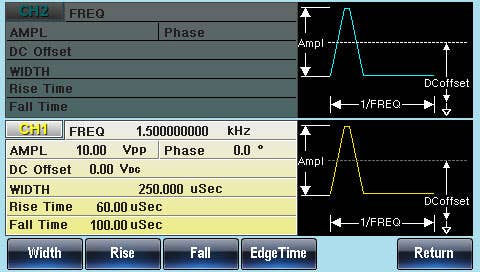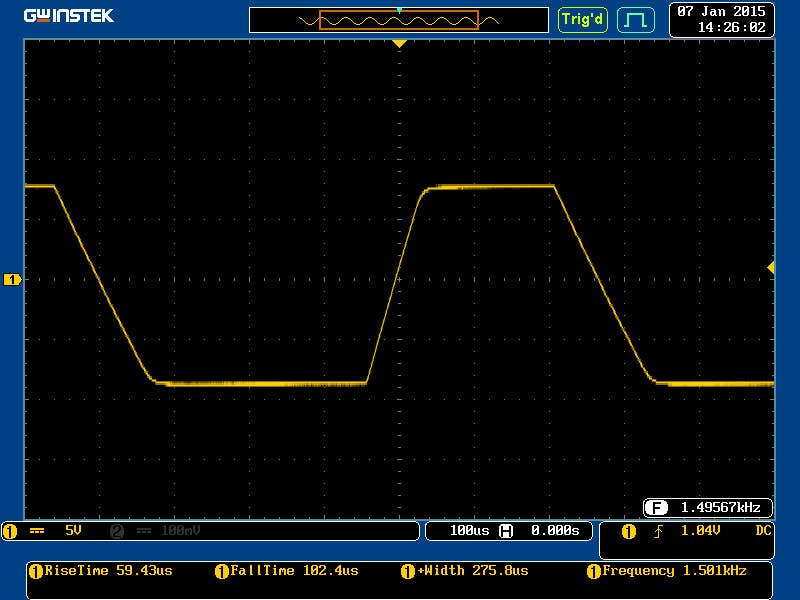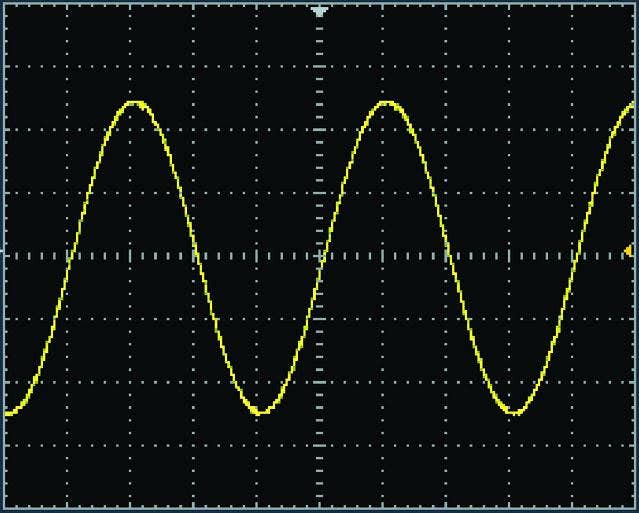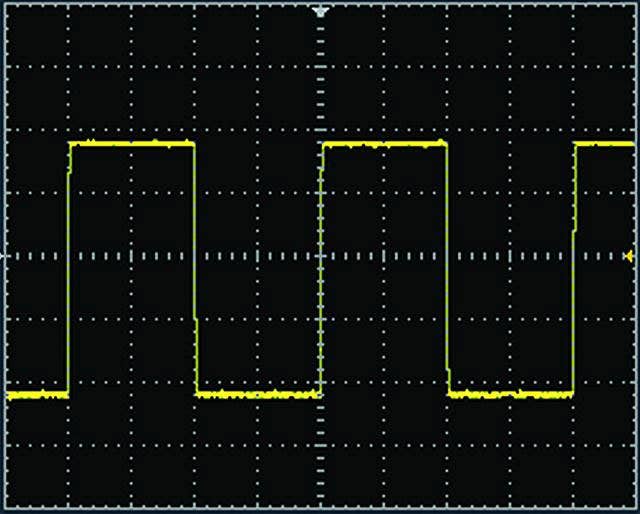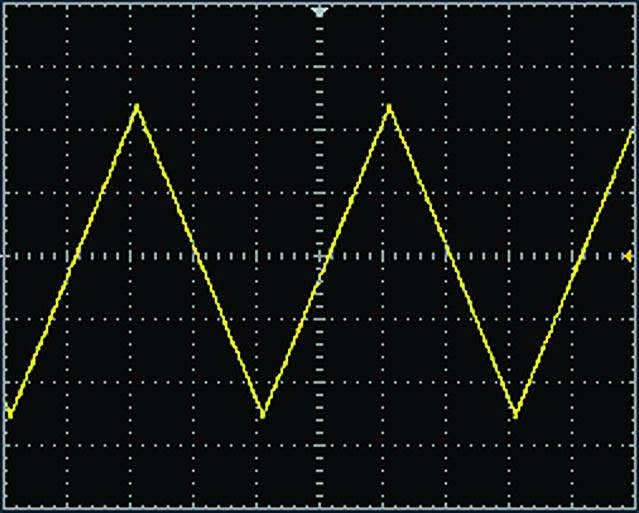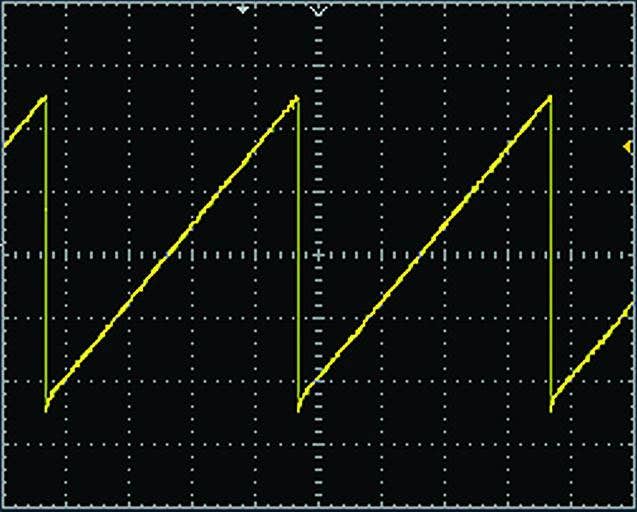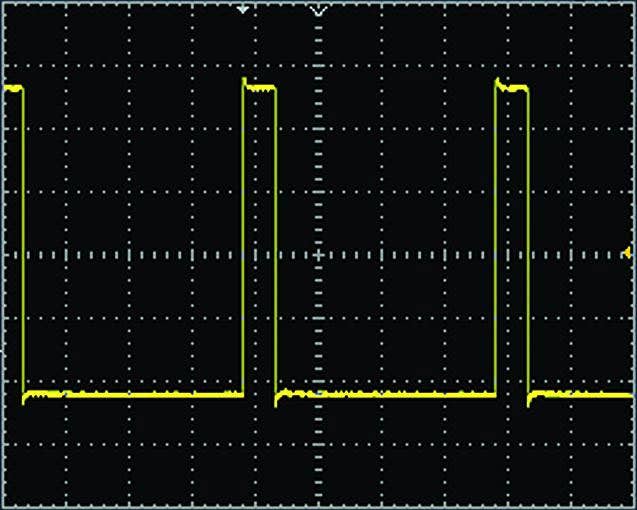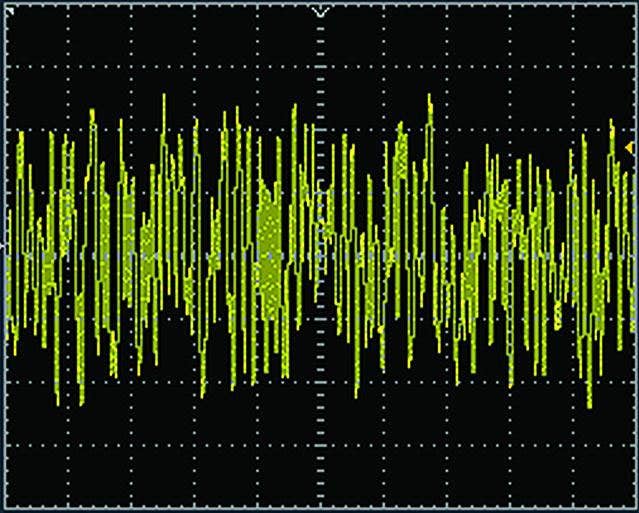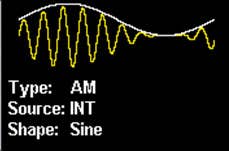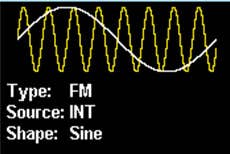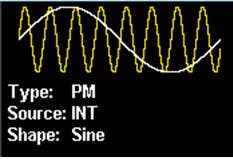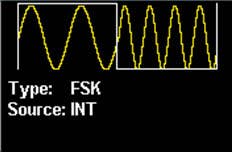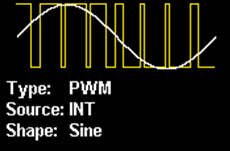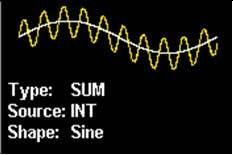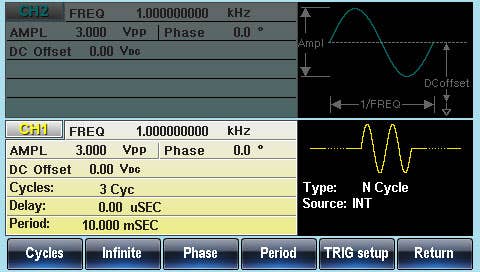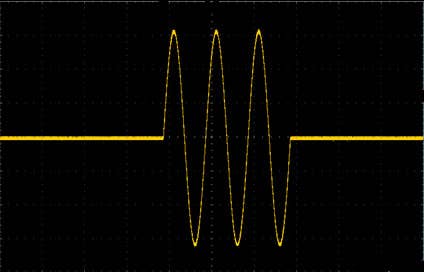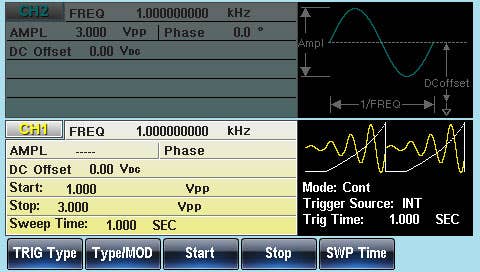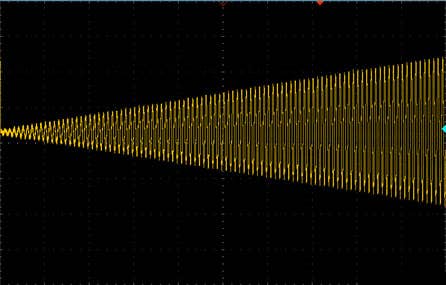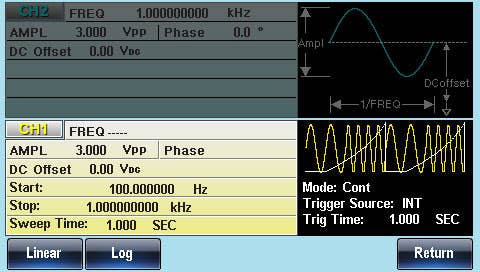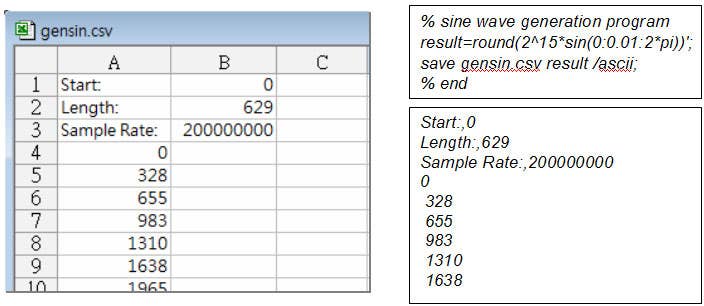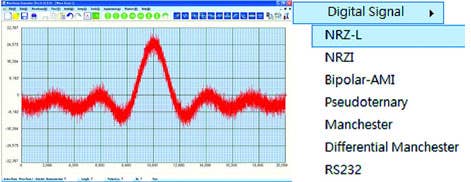Instek AFG-3022
20 MHz Dual Channel Arbitrary Function Generator
The Instek AFG-3022 Dual Channel Arbitrary Function Generator is designed to meet industry, scientific research, and education applications. In the design of isolated output, all output channels are earth ground isolation, which is suitable for test applications of floating circuit.
- Frequency: 1 μHz to 20 MHz
- Number of Channels: 2
- Arbitrary Waveform 250 MSa/s, 16-bit resolution, 8M memory depth
- Isolation Channel Circuit Design
- Frequency: 1 μHz to 20 MHz
- Number of Channels: 2
- Arbitrary Waveform 250 MSa/s, 16-bit resolution, 8M memory depth
- Isolation Channel Circuit Design
- Synchronized Phase operates up to 6 units and 12 channels
- Harmonic Signal Generator
- Dual channel models support SUM modulation, Coupling, Tracking, and Phase functions
- Pulse Waveform Parameters Can be Set independently
- Built-in AM/FM/PM/FSK/PWM/SUM Modulation, Sweep and Burst Functions
- USB/LAN Standard Instrument Control Interface, Optional GPIB Interface Sold Separately
The Instek AFG-3022 20 MHz Dual Channel Arbitrary Function Generator is designed to meet industry, scientific research, and education applications. In the design of isolated output, all output channels are earth ground isolation, which is suitable for test applications of floating circuit. For instance, connecting an AFG-3000 with a power supply' DC voltage, the maximum AC-DC cascaded output reaches +42V or -42V. Each channel of dual channel models can be operated independently or multi units can simultaneously function without taking grounding reference into consideration. Applications are, for instance, the ignition control or transmission device of automotive electronics. The AFG3022 features sample rate of 250MSa/s, 16-bit resolution, and 8M point memory depth for arbitrary waveform generation. Users not only can save the edited waveforms to the memory to build arbitrary waveforms, but also rebuild waveforms by the AFG-3022's built-in DSOLink function with a GW Instek digital storage oscilloscope.
The AFG-3022 supports synchronized phase for multi channel operation up to 6 units and 12 channels. A reference input connector is available allowing an external 10 MHz time base to synchronize the internal clock and elevate the frequency output accuracy. The AFG-3022 supports frequency sweep and amplitude sweep that can also integrate other functions, including linear/logarithm, one-way (saw tooth)/two-way (triangle), continuous/single trigger/gated trigger to meet various application requirements by applying different sweep methods. Frequency sweep tests the frequency response of electronic components such as filter and low frequency amplifier. Amplitude sweep simulates vibration tests (requires a vibration tester), and it also conducts aging tests of various materials and linearity tests of low frequency amplifier.
The main features of the AFG-3022 include output amplitude from 1mVpp to 10Vpp (connected with a 50 Ω load); frequency range from 1uHz to 20MHz; 1uHz frequency resolution; and built-in sine, square, pulse, triangle, ramp, DC voltage, harmonic and noise. The waveform width, rise edge time and fall edge time of pulse waveform can be adjusted flexibly. Pulse waveform, with duty cycle from 0.017% to 99.983%, can be applied as trigger signals. Users can conduct arbitrary editing via 65 built-in function waveforms. The series supports AM/FM/PM/FSK/PWM modulation, frequency sweep, amplitude sweep and burst to satisfy industrial application requirements. Dual channel models provide SUM modulation, coupling, tracking, and phase to meet the test requirements of differential signal, phase control and amplifier distortion. Built-in 8th harmonic signal generator simulates harmonic signal of switching power supplies and it also tests EMI power filter characteristics. The AFG-3022 provides free arbitrary waveform editing software (AWES) for users to quickly edit waveforms from the built-in diagrams so as to execute measurements.
Circuit Design for Ground Isolation among Output/Input Terminal, Instrument Chassis, and Dual Channels
Channel 1, channel 2, reference 10 MHz input, synchronization and modulation input/output connector grounding are isolated from instrument chassis. The output channels of dual channel models are independently isolated. These connectors can sustain maximum isolation voltage up to ±42Vpk (DC+ AC peak value) to earth ground that is ideal for floating circuit tests. Multi units output can be executed without factoring in grounding reference issue. The built-in DC bias voltage of the AFG-3022 can be applied on various waveforms. The DC bias voltage is ±5V under 50 Ω load. Automotive electronic applications such as ignition controller or transmission devices require higher DC bias voltage. As shown in the following diagrams, when the Voffset of the power supply is 32Vdc, the maximum output of the AFG is 20Vpp, and the maximum voltage output to the ground is 42V. If Voffset is 41Vdc, the maximum output of the AFG is 2Vpp and the maximum voltage output to the ground remains to be 42V. Therefore, an external power supply can be used to bring up the DC bias voltage to ±42Vpk (DC+ AC peak value).
Multi Channel Synchronized Phase Operation
Users can implement multi channel synchronized-phase operation up to 6 units and 12 channels. There are two methods to execute synchronized phase applications. Under different multiple frequency settings, master unit can synchronize the phase of each channel of the slave units. At 10 MHz reference frequency input (REF IN) connector, users can input 10 MHz atomic clock frequency standard via external signal source to increase frequency output accuracy.
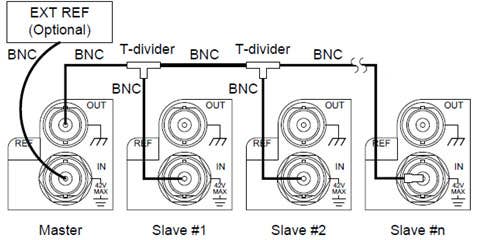
Method one uses reference frequency output (REF OUT) and reference frequency input (REF IN), 50 Ω BNC cable (RG-58A/U) and T type BNC connector to connect up to 6 units to conduct synchronized phase operation.
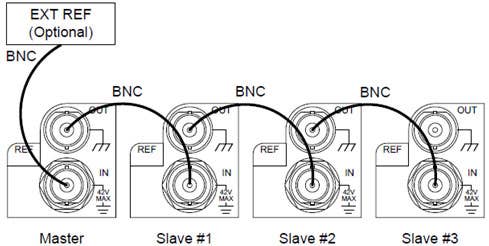
Method two uses reference frequency output (REF OUT) and reference frequency input (REF IN) ), 50 Ω BNC cable (RG-58A/U) to connect up to 4 units to conduct synchronized phase operation.
Harmonic Signal Generator
Harmonic signal generator simulates the harmonic signal of switching power supplies and conducts characteristics tests on EMI power filter. Users can set order number and phase for harmonic signals to obtain desired signals. The following diagrams show 8th harmonic signal.


